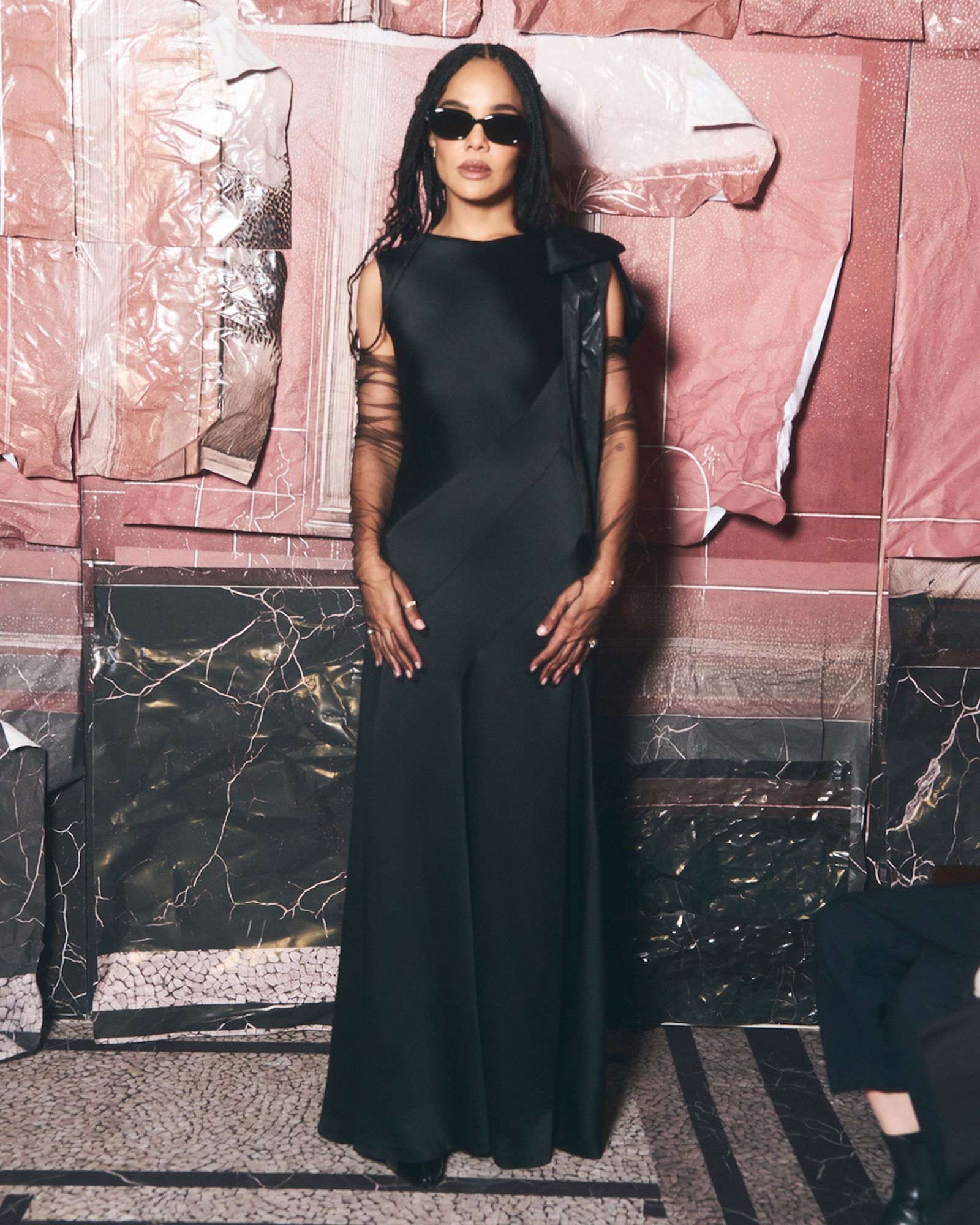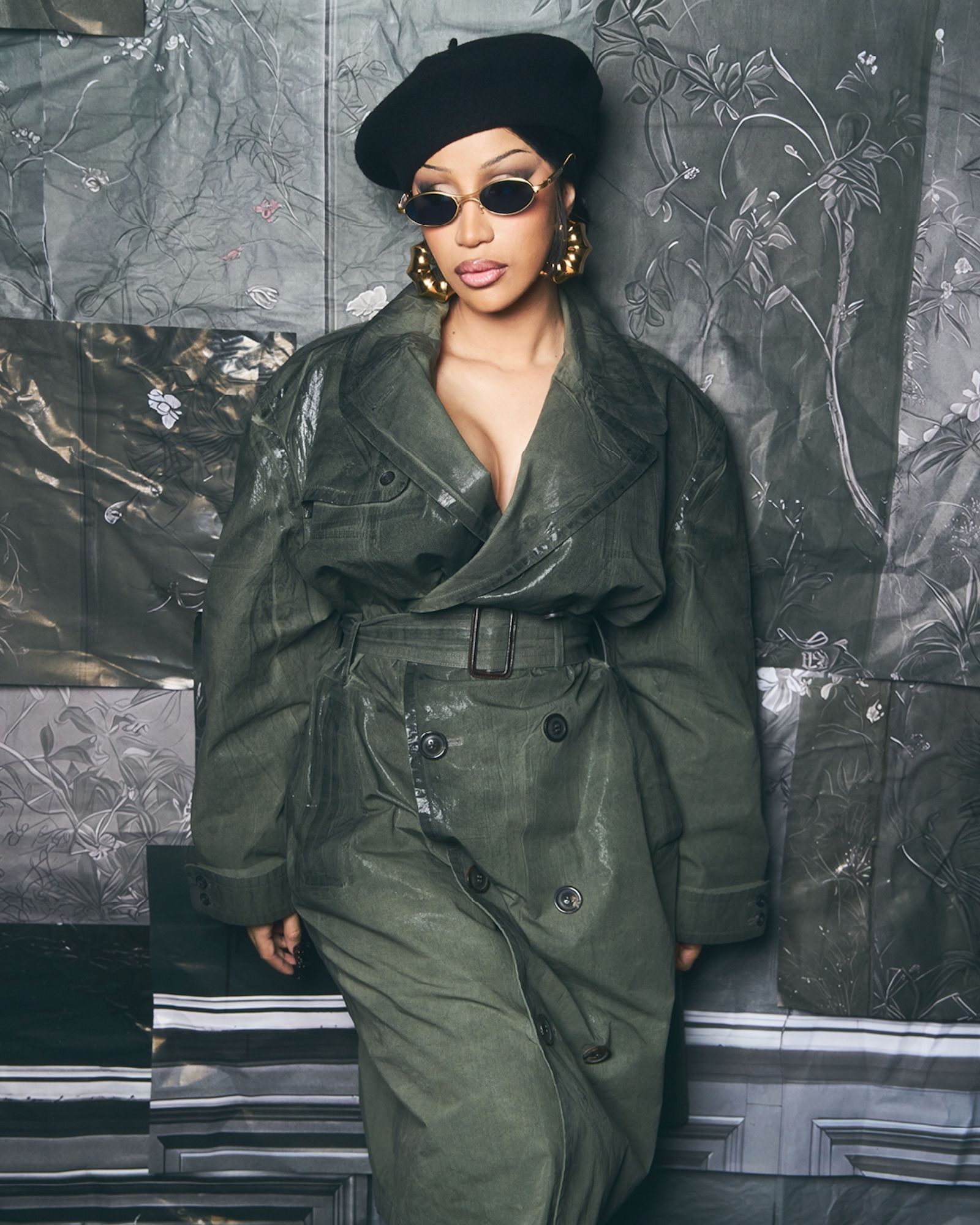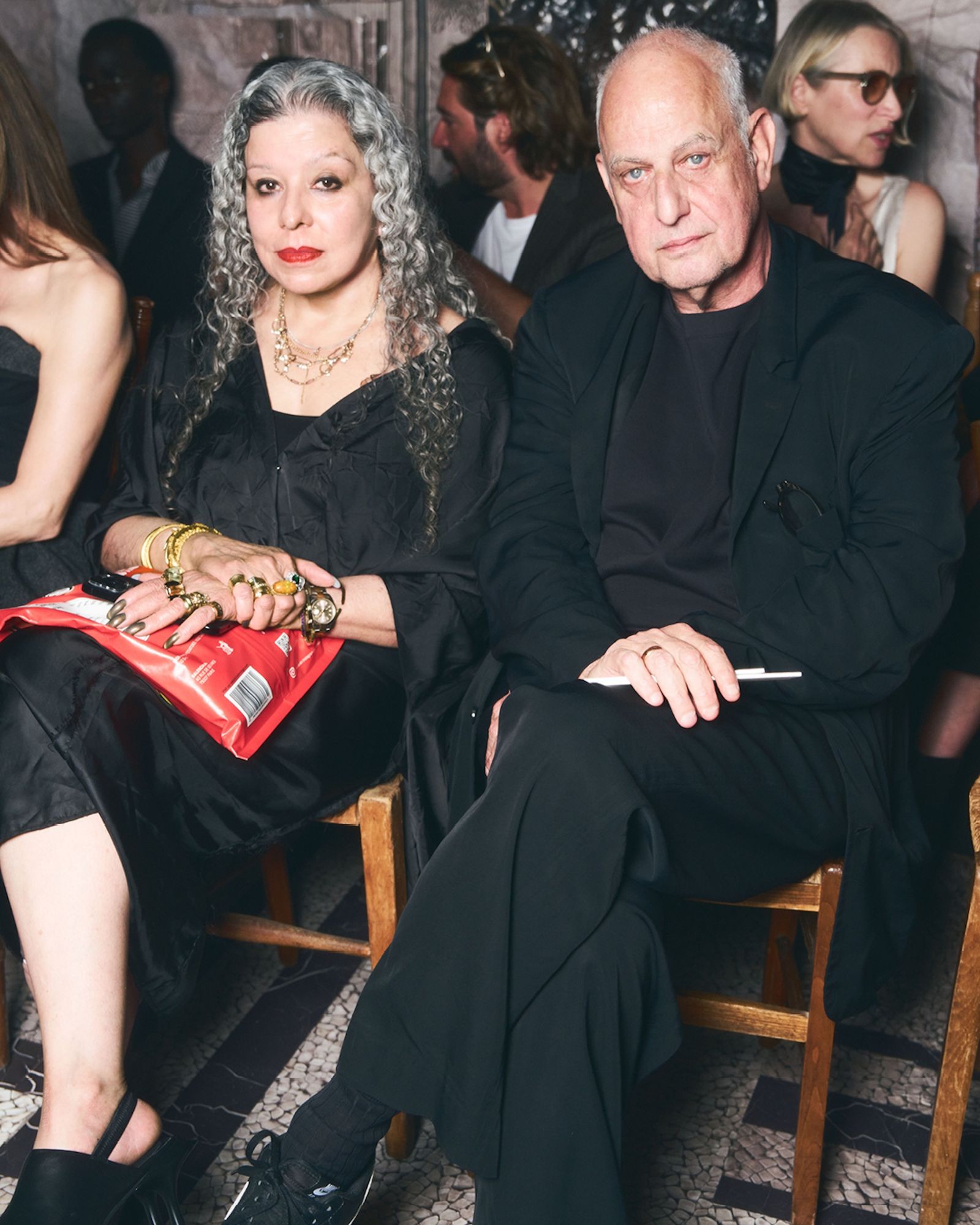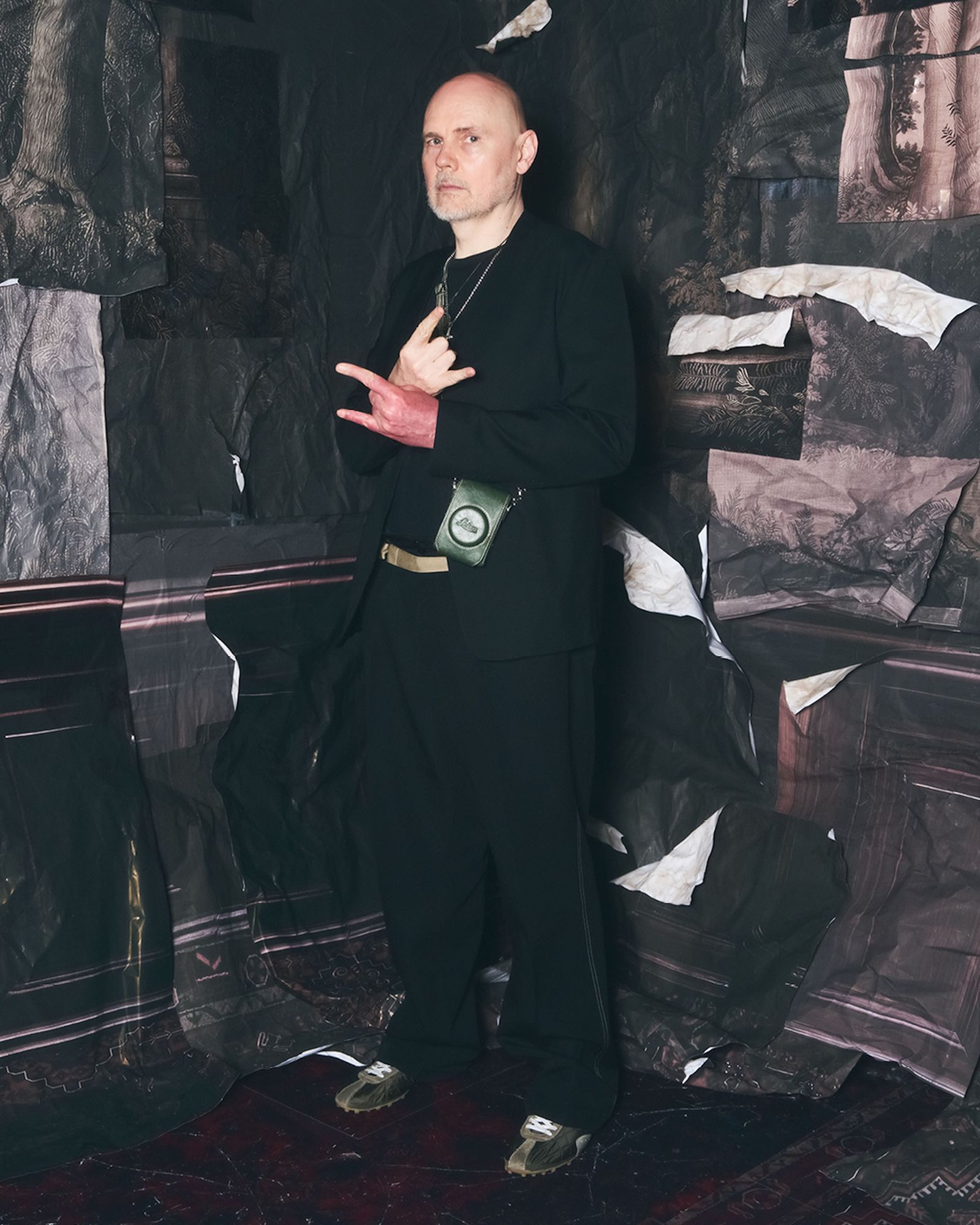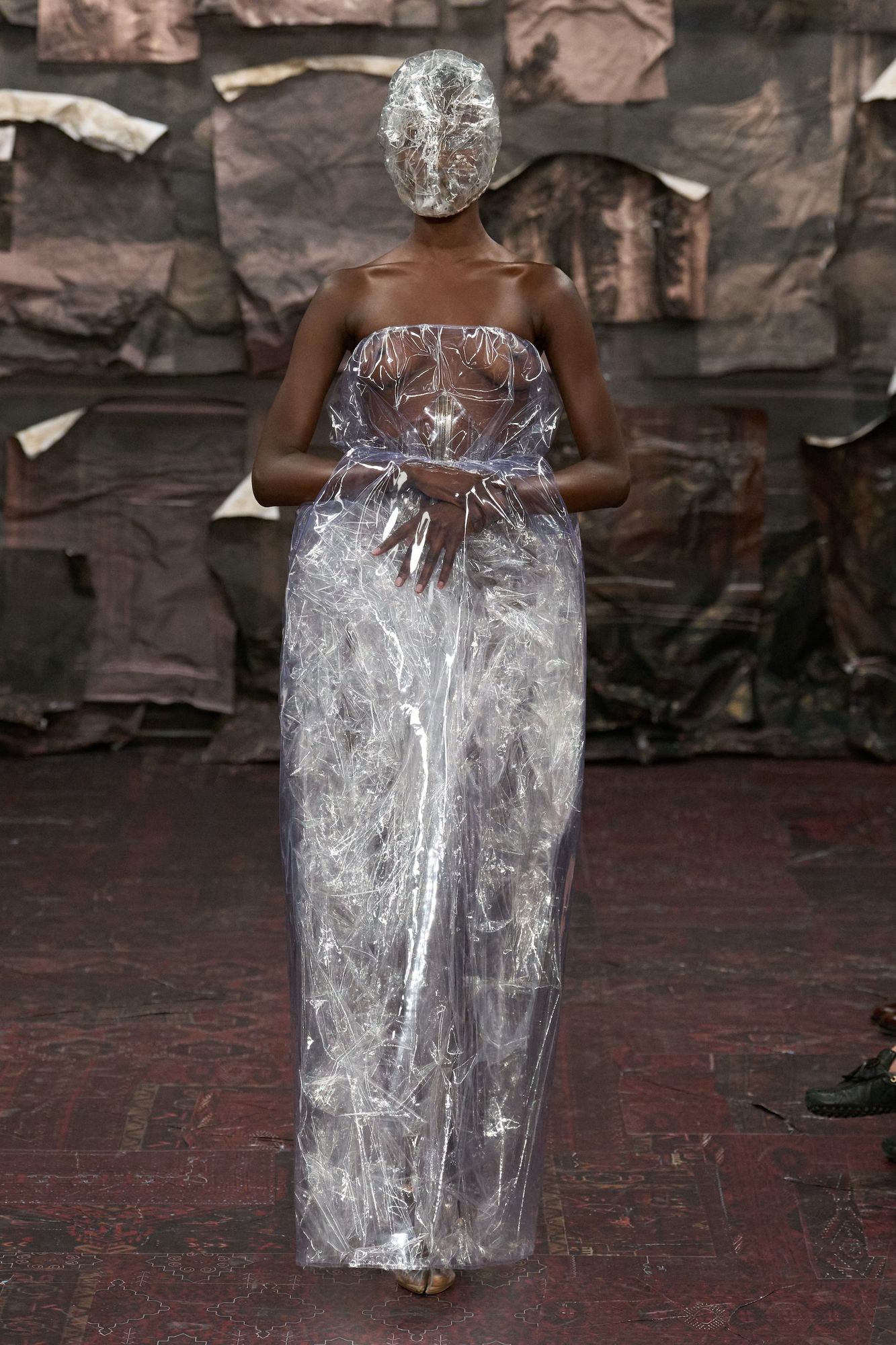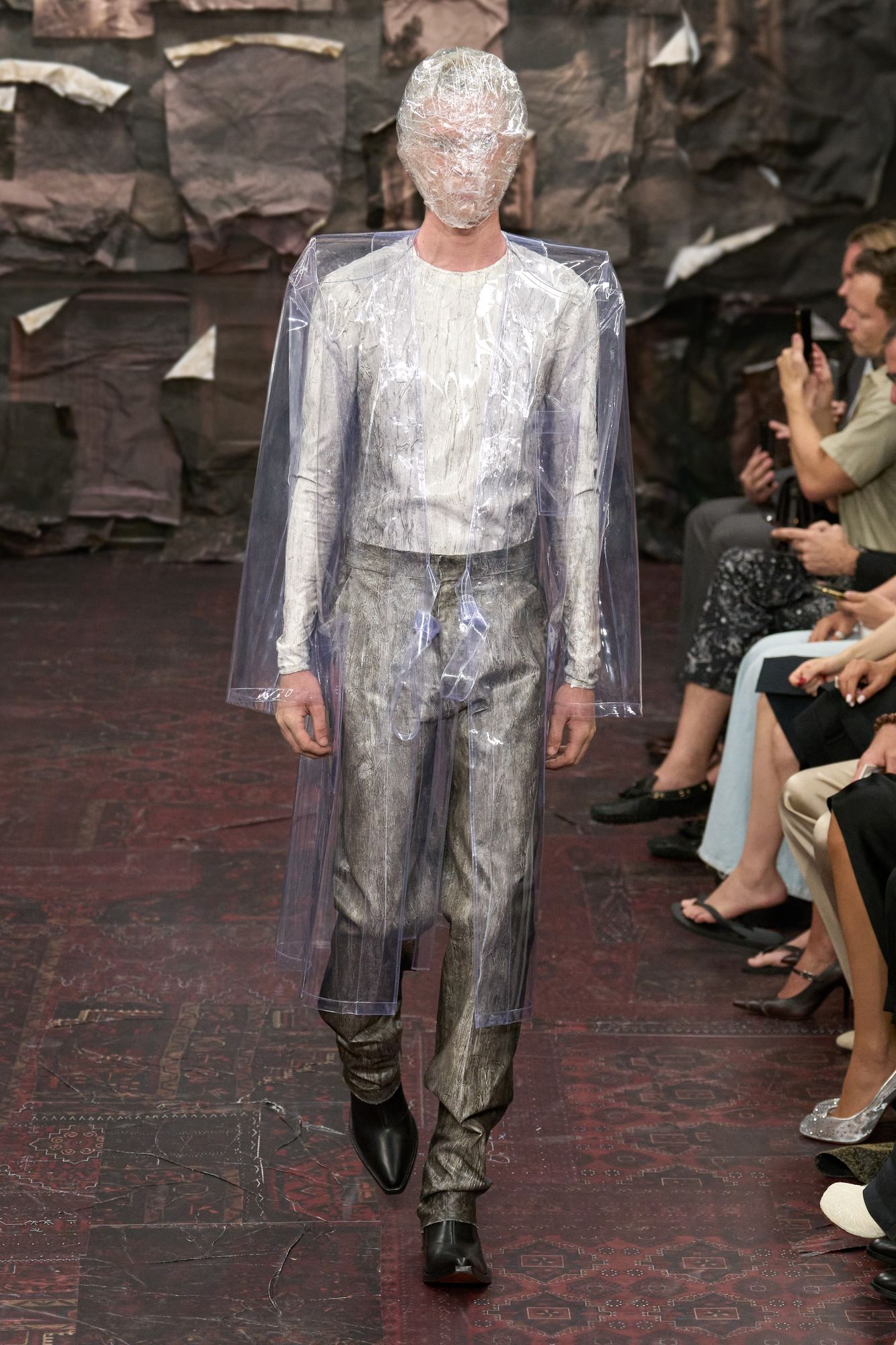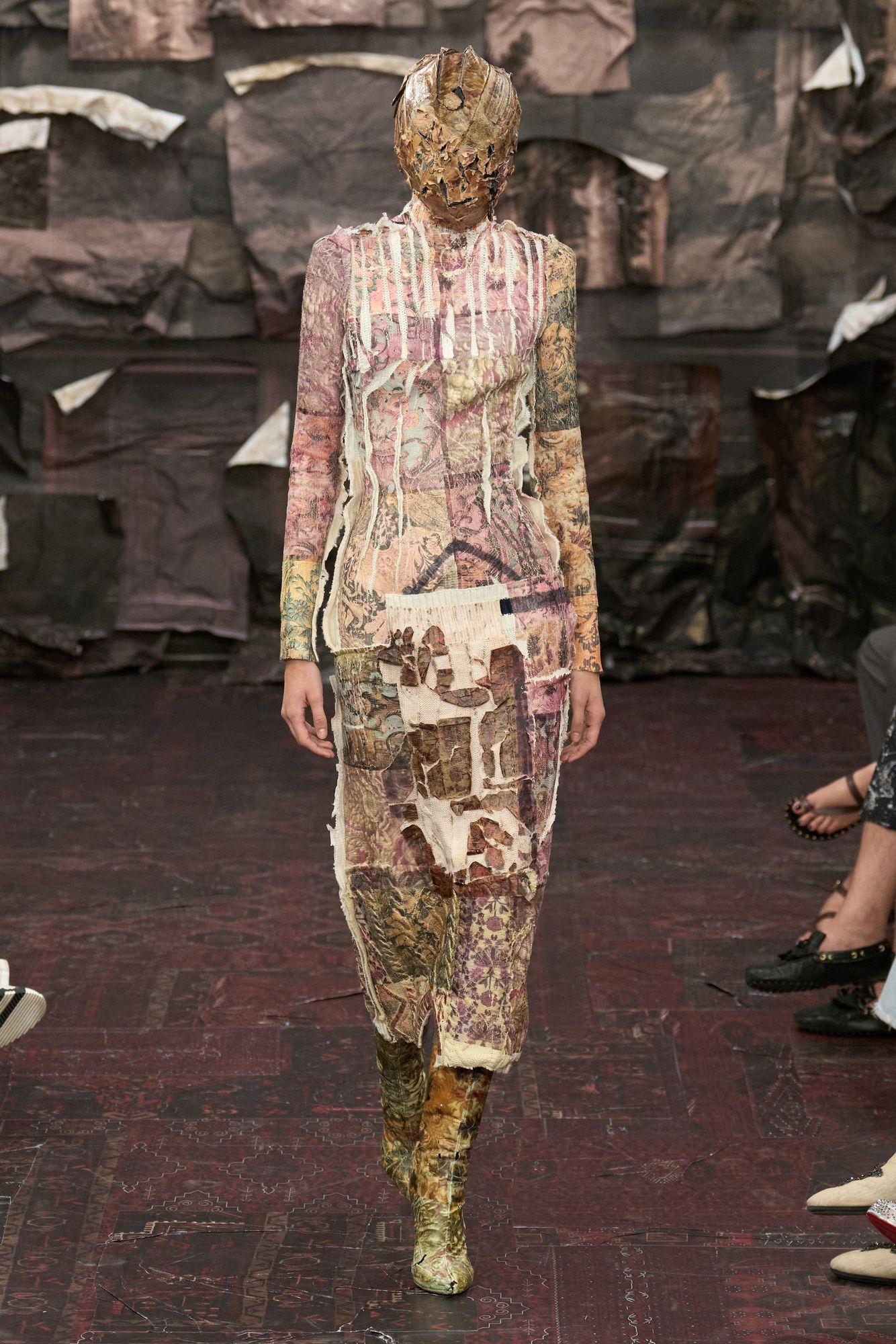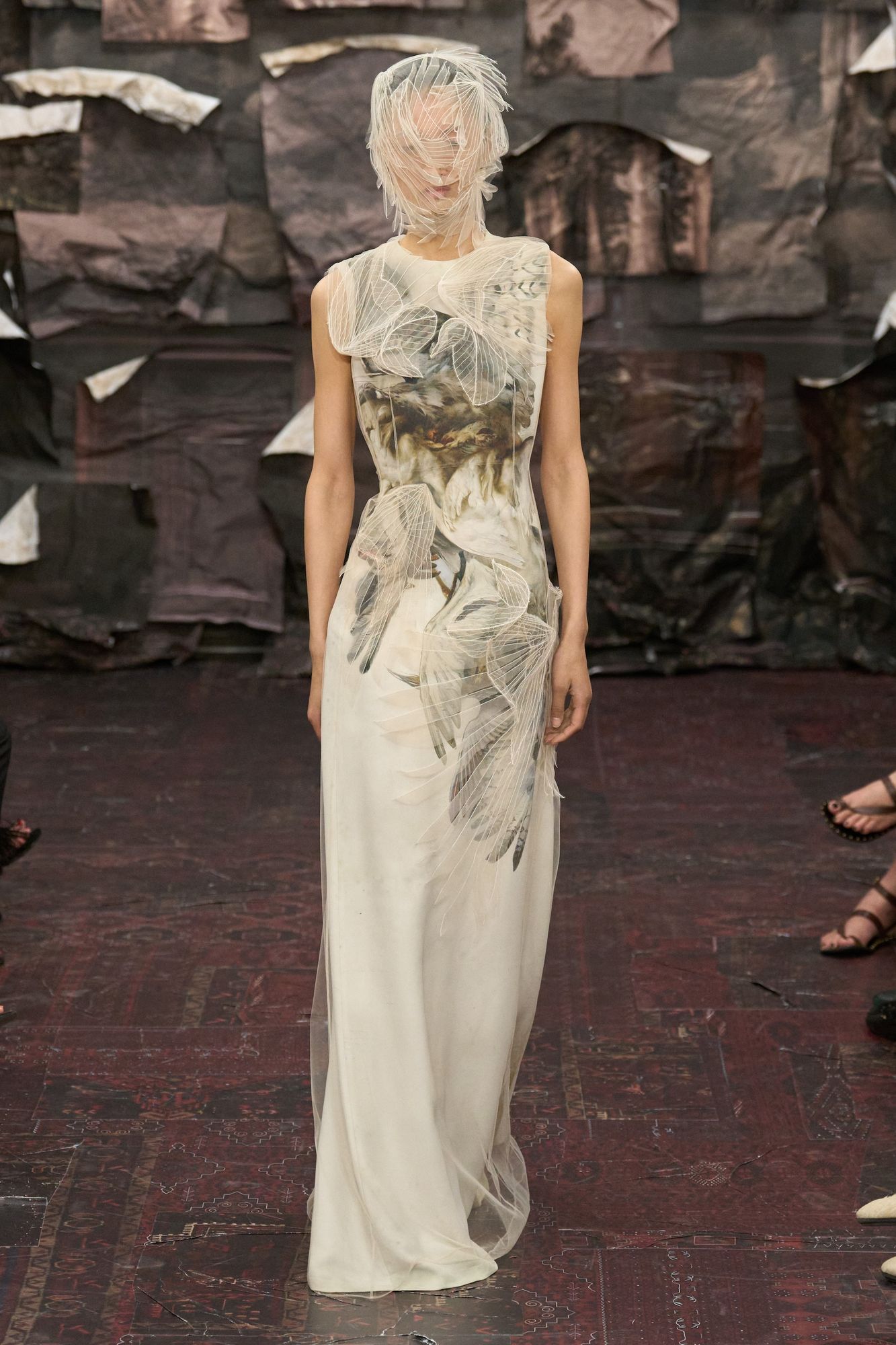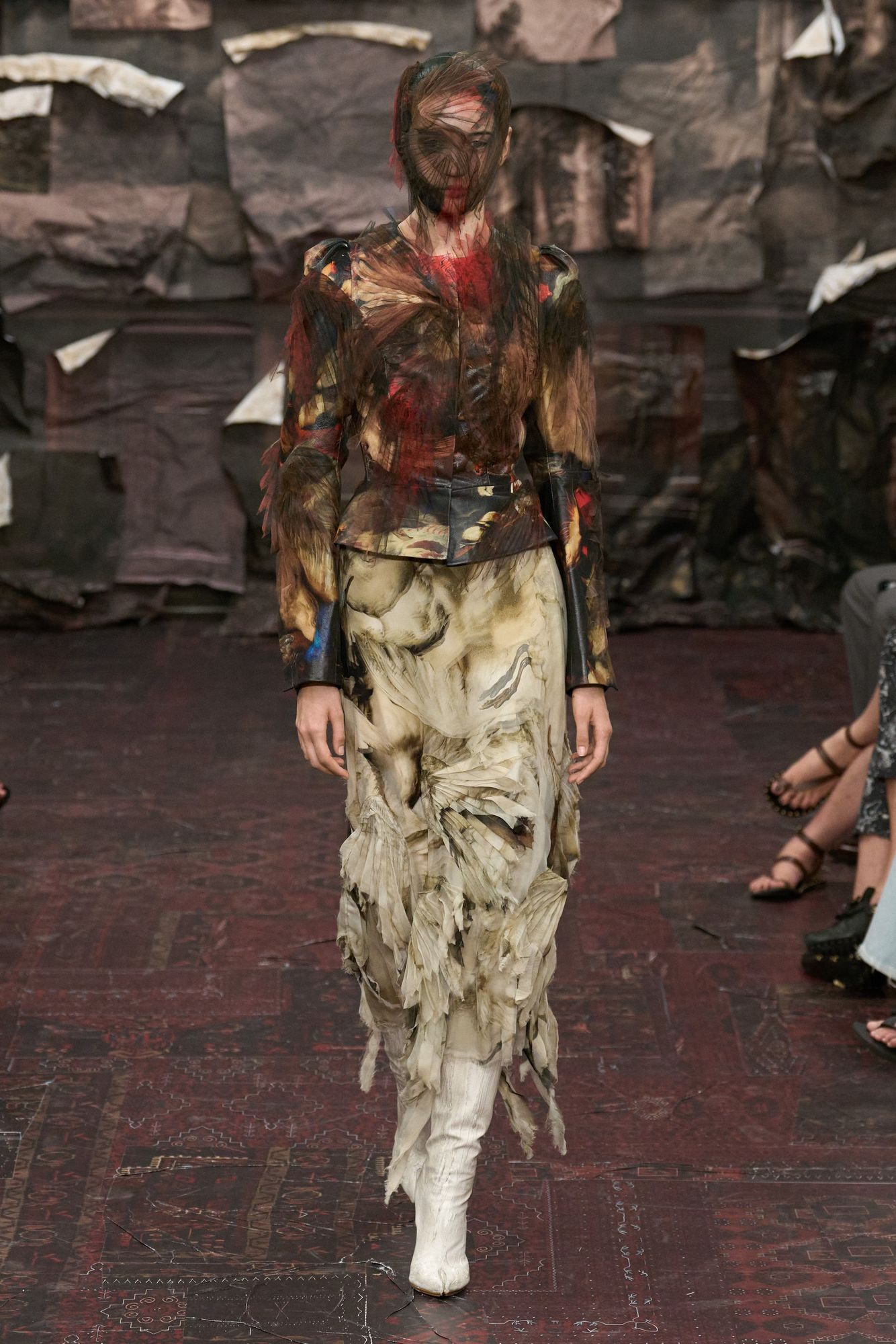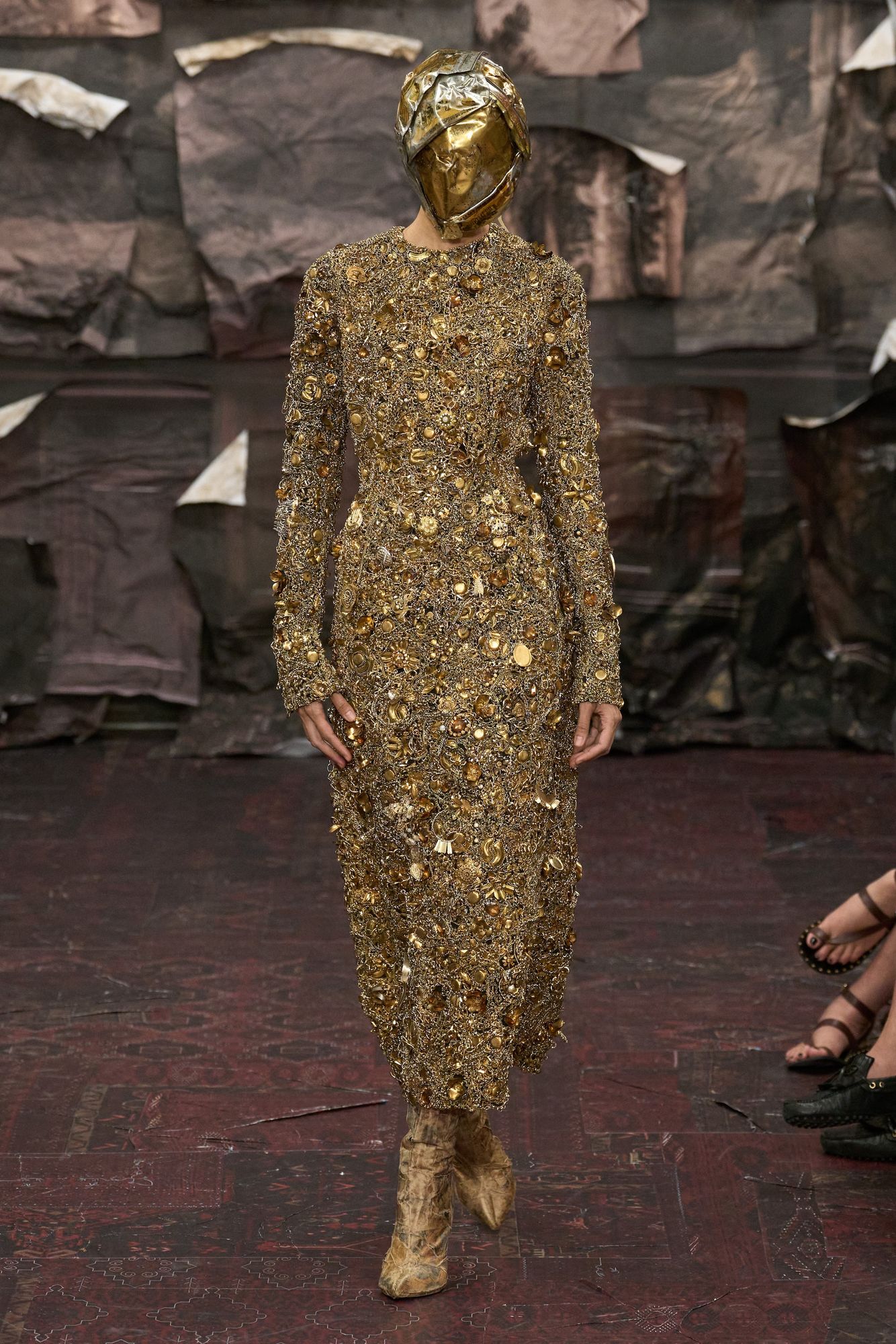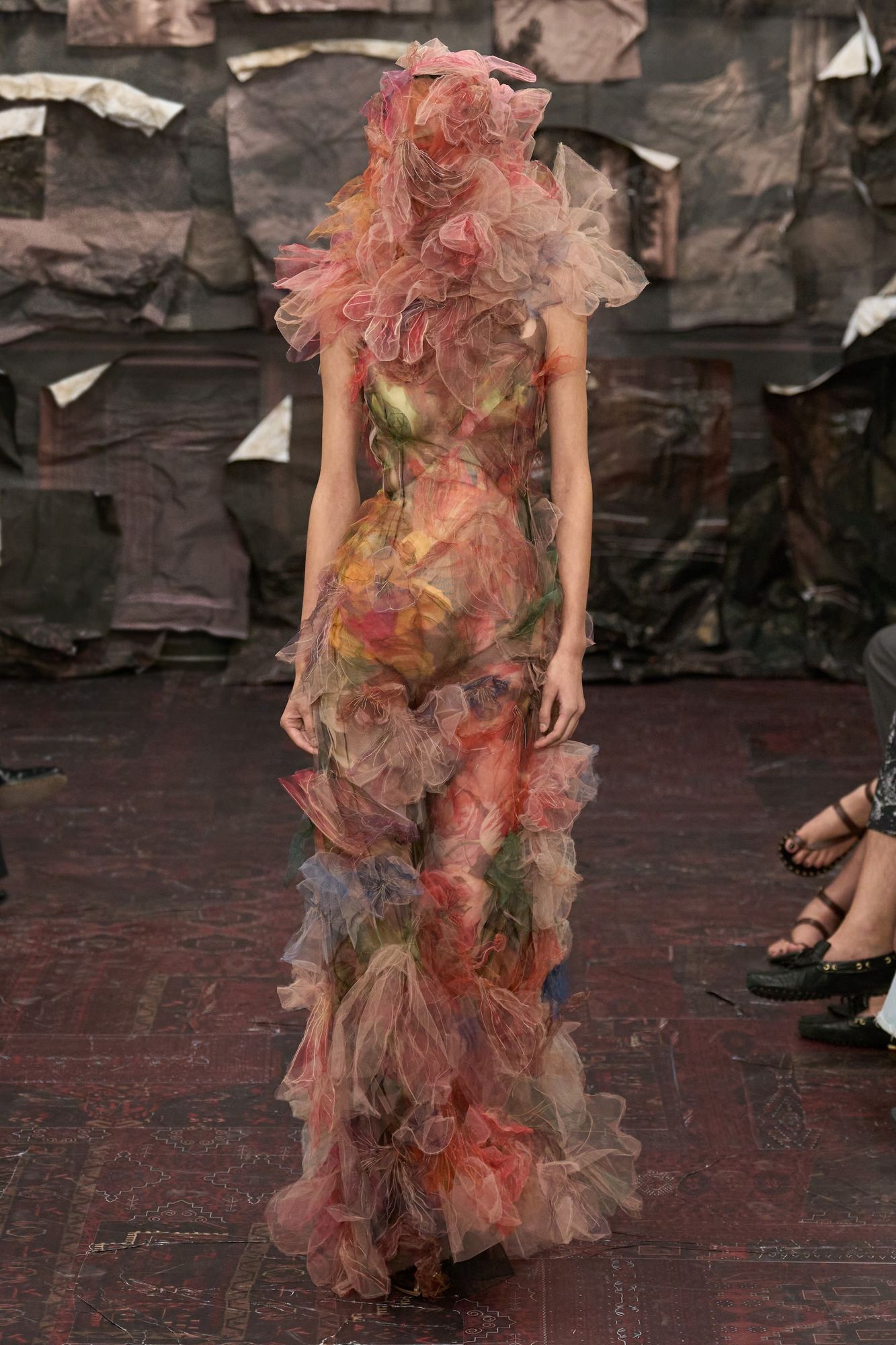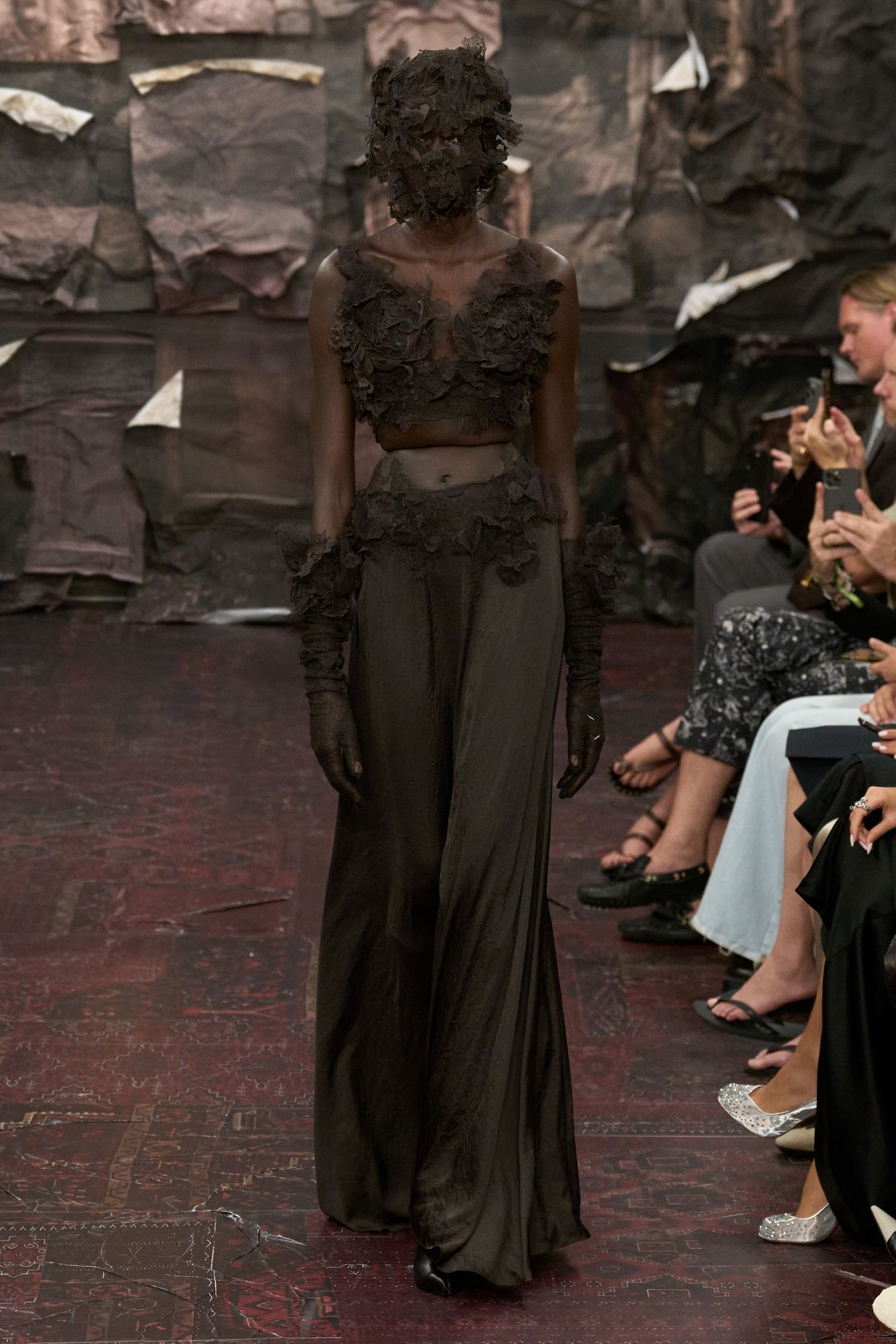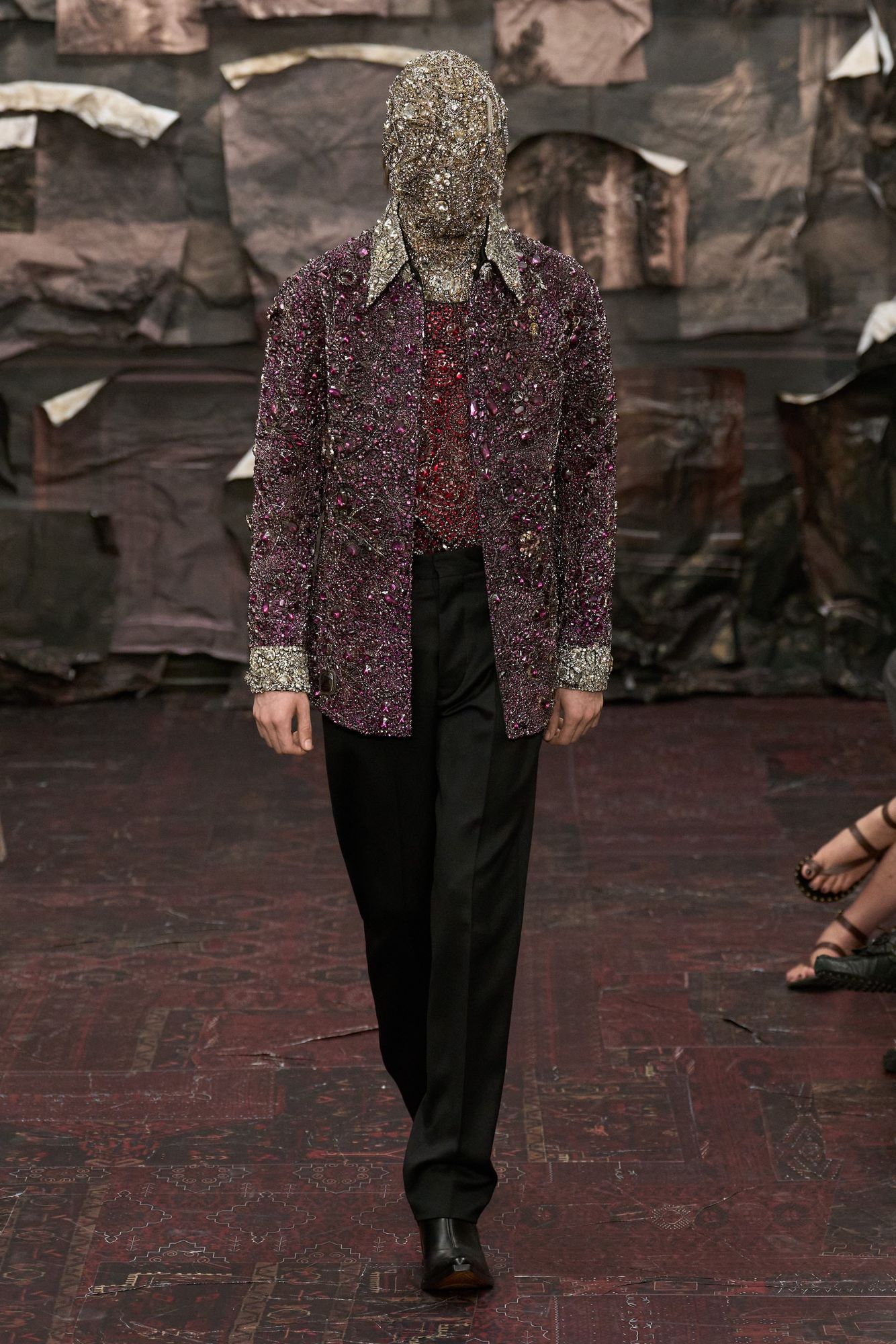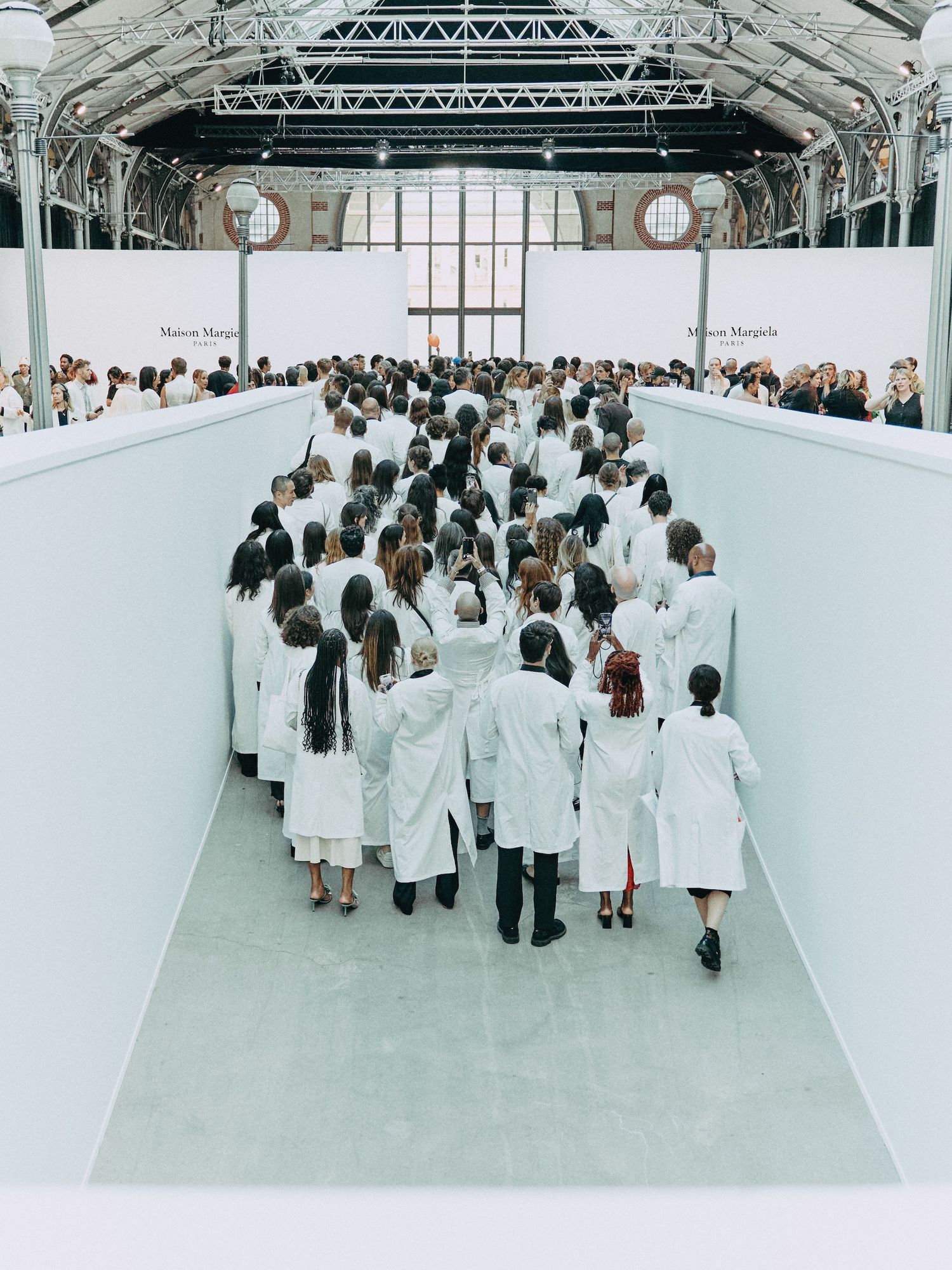There’s a poignant phenomenon unfolding within the industry. We’ve long relied on the shared understanding that change and novelty are the primary currencies of fashion. With major debuts defining recent seasons, this pursuit feels more palpable than ever. Amid this landscape, a sense of fashion fatigue has quietly emerged—echoed in industry circles overwhelmed by the constant, saturated exposure to clothes and “beauty.” It begs the question: has fashion become so formulaic, so numbed by repetition, that nothing feels sacred anymore?
Still, Maison Margiela stands out as an anomaly in this era. Martin Margiela's eponymous label has always been characterized by a unique approach to deconstruction—embracing both the act and its implications on the design process. First understood by a few, but undeniably felt by all. From the founder’s disruptive beginnings to Matthieu Blazy’s impactful tenure, to John Galliano’s decade of cinematic decadence, the house has consistently rewritten its codes while maintaining its core. Now, with Glenn Martens at the helm, the gaze of the industry sharpens once more.
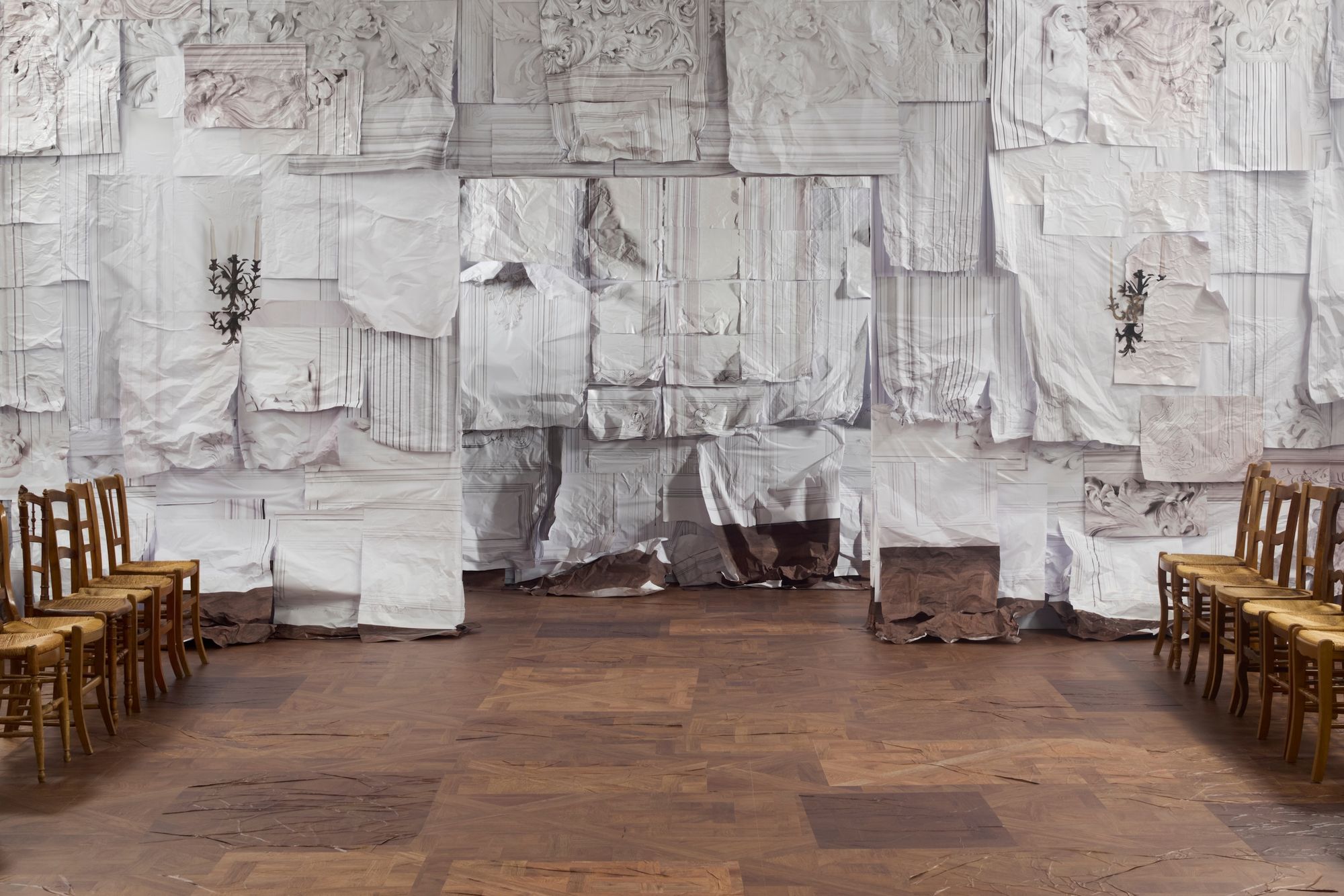
Artisanal Fall 2025 marks the end of an era—and the quiet beginning of a new one. From the moment the first look appeared—a sculpted plastic bustier dress paired with a translucent mask and the house’s iconic leather Tabis, now reimagined with a more pointed silhouette—to the finale: a fluid green silk charmeuse anatomical gown veiled with an organza face mask, it’s clear that Martens intends to honor the house’s legacy while imprinting it with his own. Beyond continuity, Martens’ Margiela reminds us of the sacred quality that fashion can still hold.
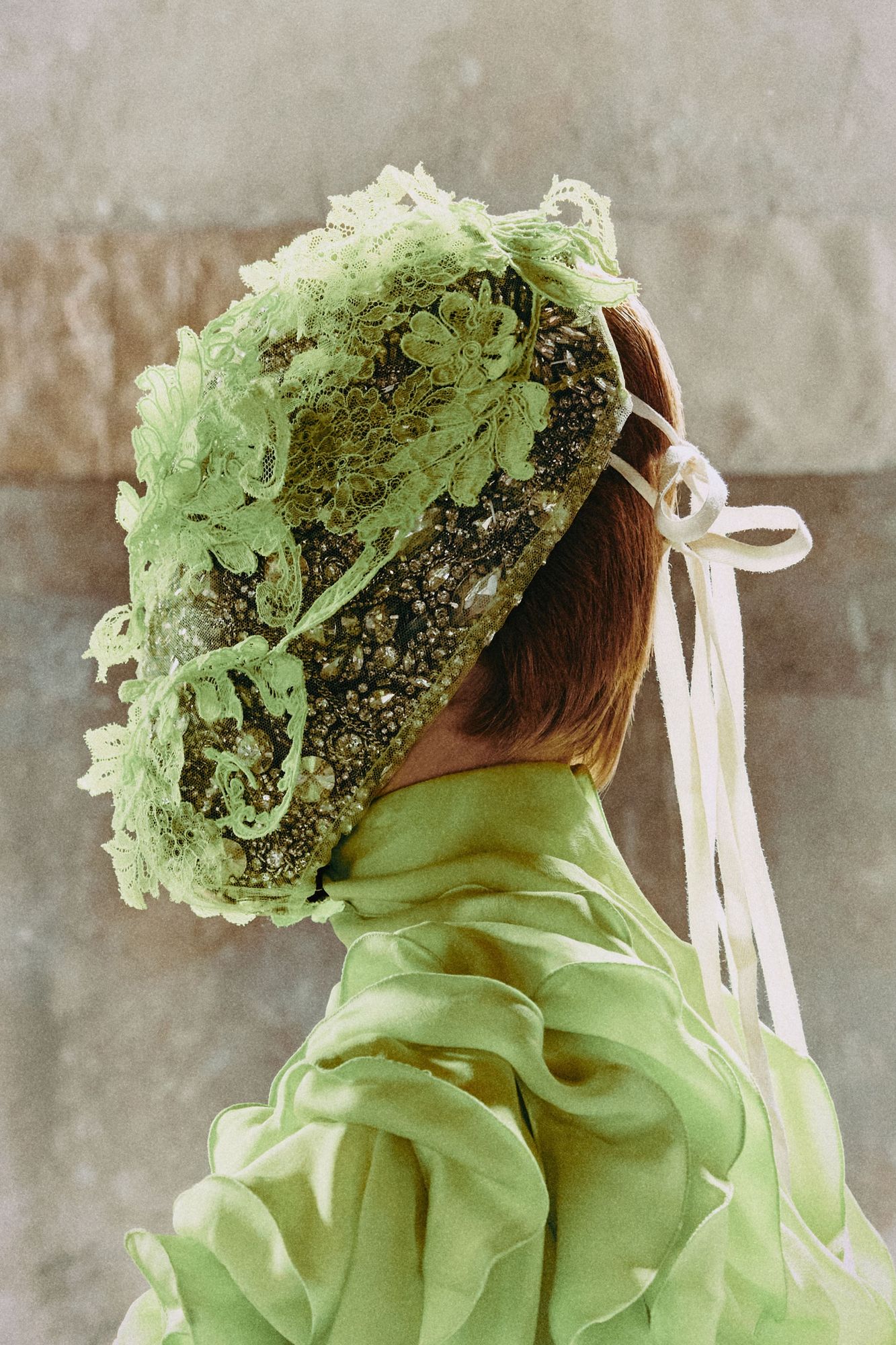
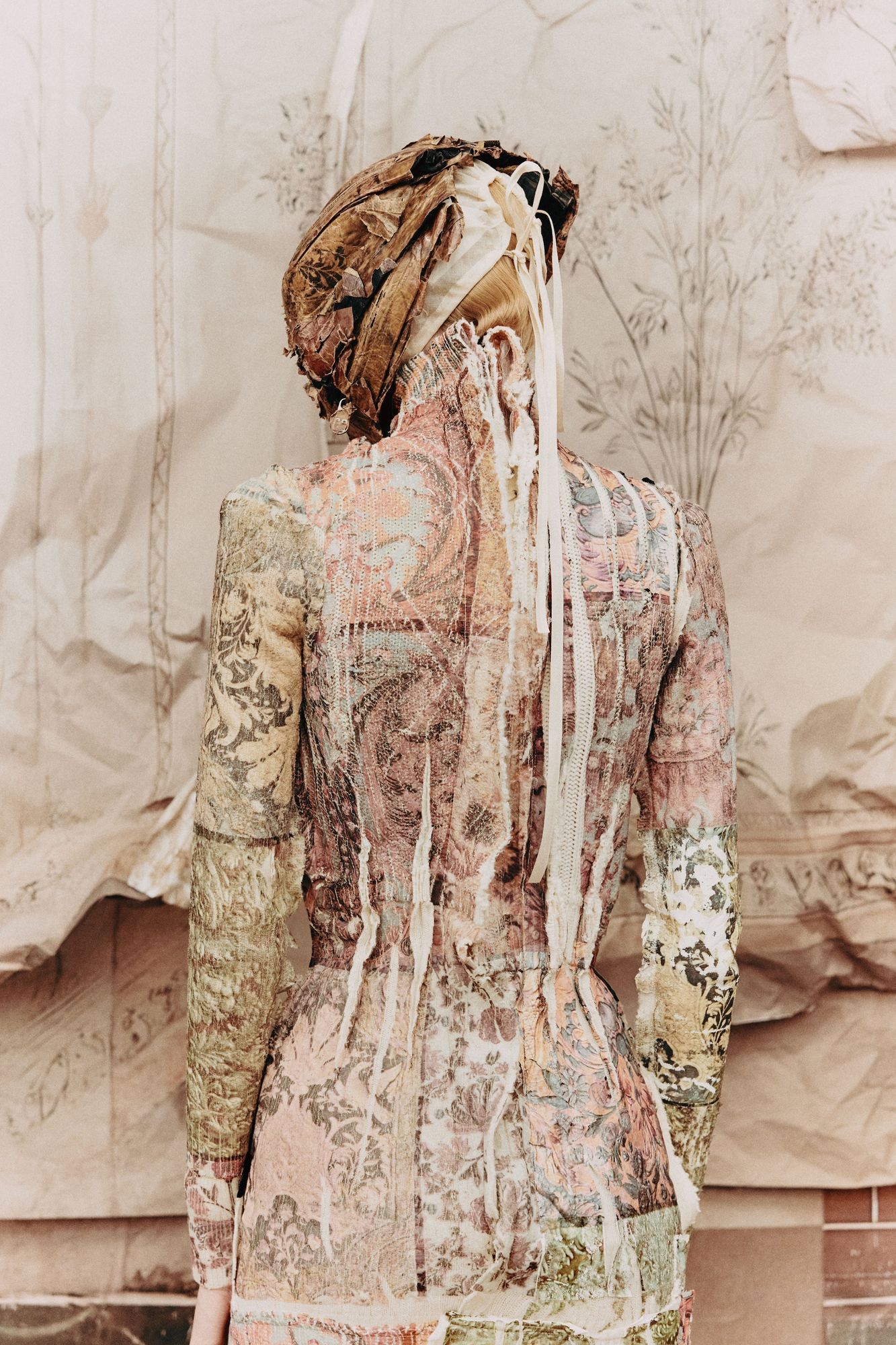
In Solemn Anonymity
The collection redirects attention to what truly matters: the clothes. Anonymity, a cornerstone of the Maison’s ethos, remains central to Martens’ vision. The absence of celebrity spectacle or recognizability on the runway underlines his focus: a masterclass in craftsmanship and subversion, both of the house’s legacy and his own established codes. No fuss, no spectacle—only meticulous construction and clarity of vision, evidenced in the show’s comprehensive notes.
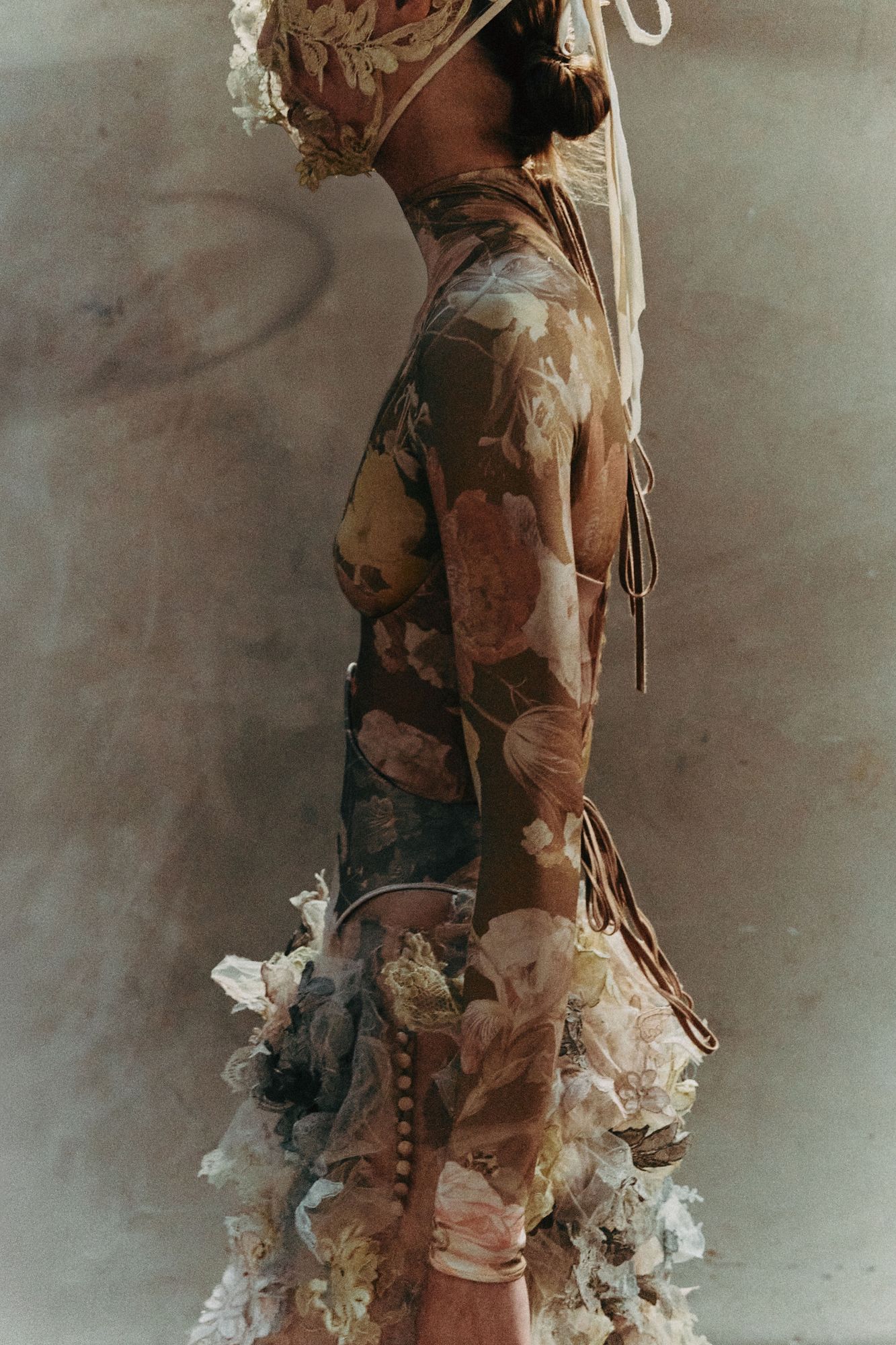
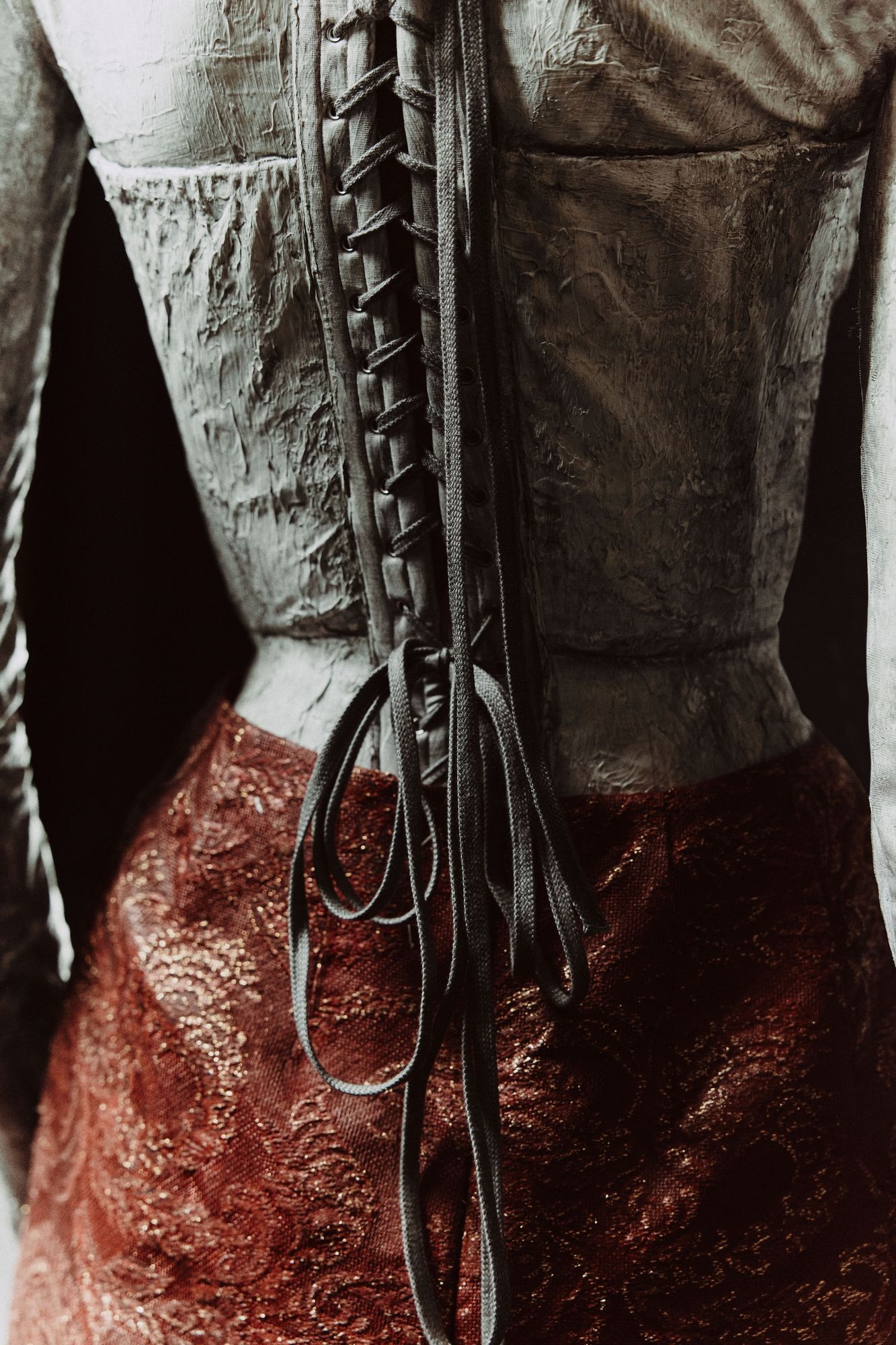
Masks, emblematic of Margiela’s DNA, were reinterpreted in a multitude of materials—plastic, organza, lace, necktie silk, canvas, even compressed metal boxes—each variant reinforcing the Maison’s philosophy of erasing ego in favor of craft. It is relatively uncommon for a fashion house like Maison Margiela to find a creative director who successfully navigates its complex heritage without getting lost within it. Martens does so with precision. His experiences at Y/Project, Diesel, and his acclaimed one-off couture collection at Jean Paul Gaultier are not erased but folded into the Margiela vocabulary. Take Look 10, for instance: a heart-shaped, aged-gold, voluminous skirt over a corseted body—equal parts poetic and architectural—a knowing nod to his sculptural signatures during his Y/Project years.
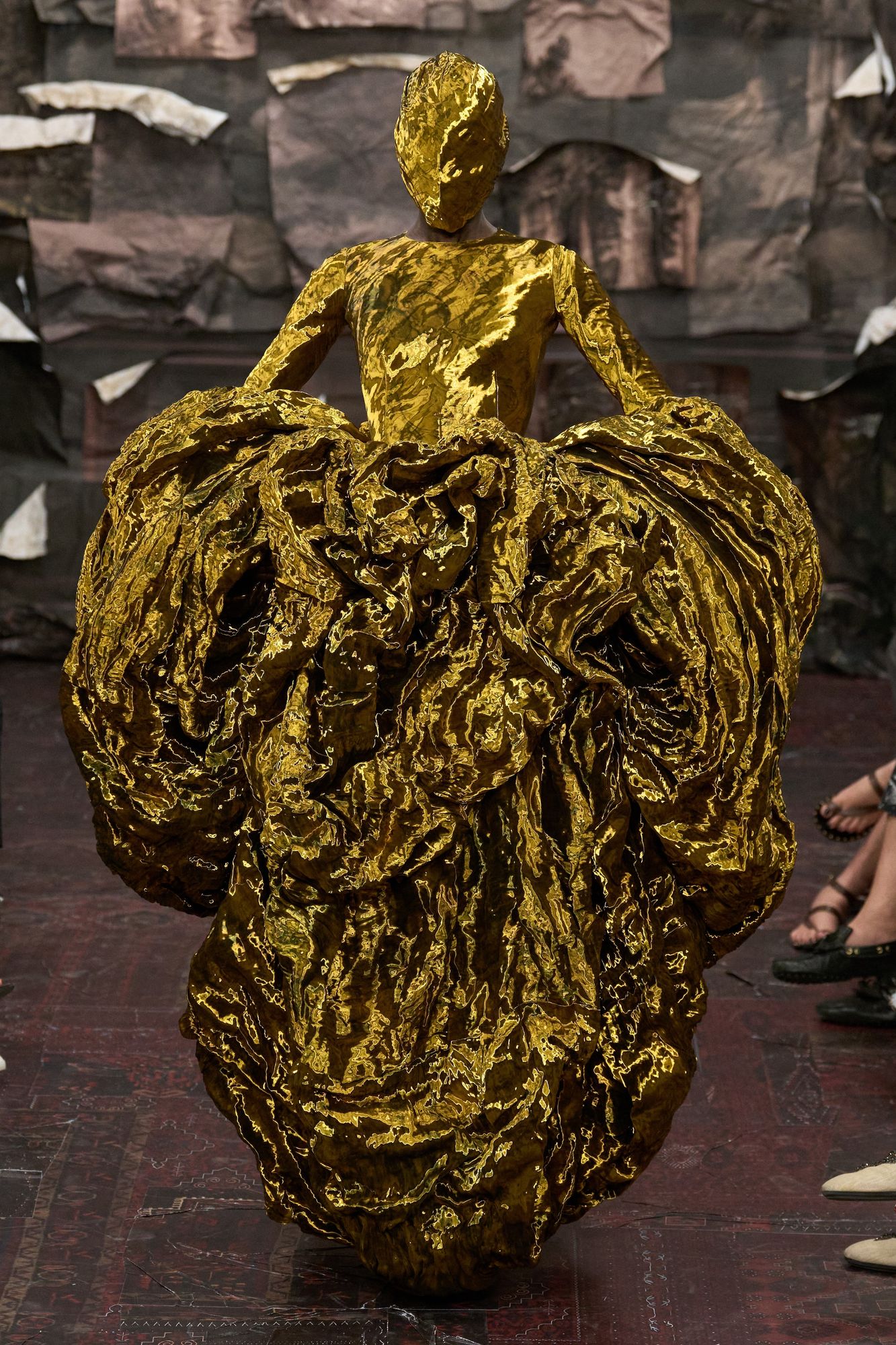
The Necessity of Re-appropriation
“Fashion is a craft, a technical know-how, and not an art,” Martin Margiela once stated—a radical stance that continues to shape the house’s DNA. It is this dedication to execution that defines Margiela’s legacy. Re-appropriation, here, is philosophical. It questions materials, techniques, and systems. According to the 1997 Margiela review essay by Caroline Evans, the “questioning spirit” is a crucial aspect of Margiela’s shows, extending this tendency beyond the designer to the audience. The unfinished becomes a state of becoming; the garment a living object that transforms beyond the atelier, the runway, or even the boutique.
Martens leans fully into this ethos. The venue itself was layered in collages of Renaissance interiors—an imagined chapel of fragmented images, tapestries of Northern European architecture. Music was a deconstructed remix of Smashing Pumpkins, reinforcing the theme of cultural rupture and reassembly. And the clothes? Well, they were formed from the least likely of sources: upcycled lining fabrics, vintage leather biker jackets, discarded costume jewelry, standard printing paper, plastic—raw materials one wouldn’t expect from the traditional view of haute couture. Decay and decadence sharing a runway.
The body, too, becomes a site of re-appropriation. Corsetry, draping, and optical illusions sculpt and distort the form, elevating it into something sculptural, spectral—half-veiled, half-revealed. Anatomy is approached with architectural precision, the flesh serving as a medium.
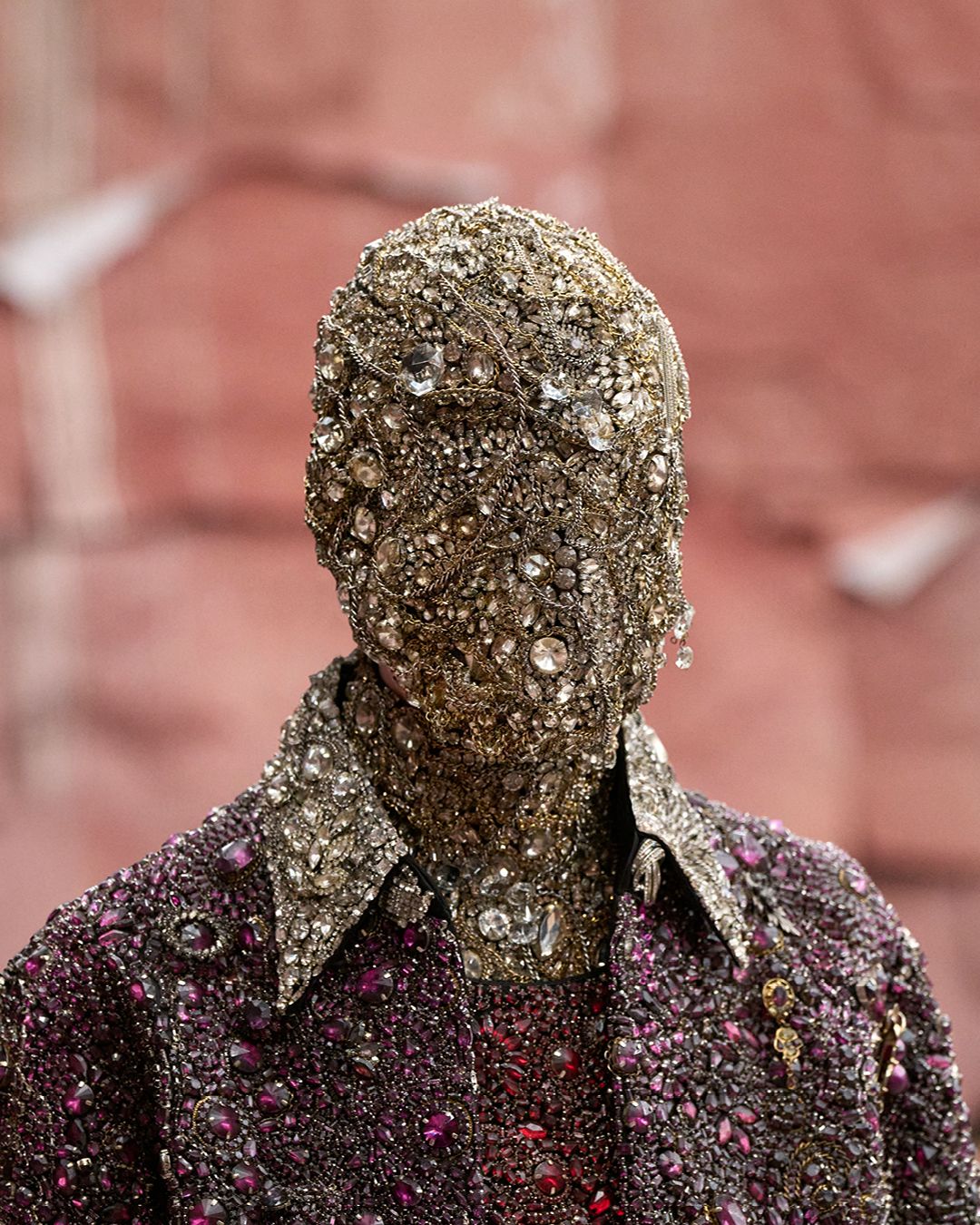
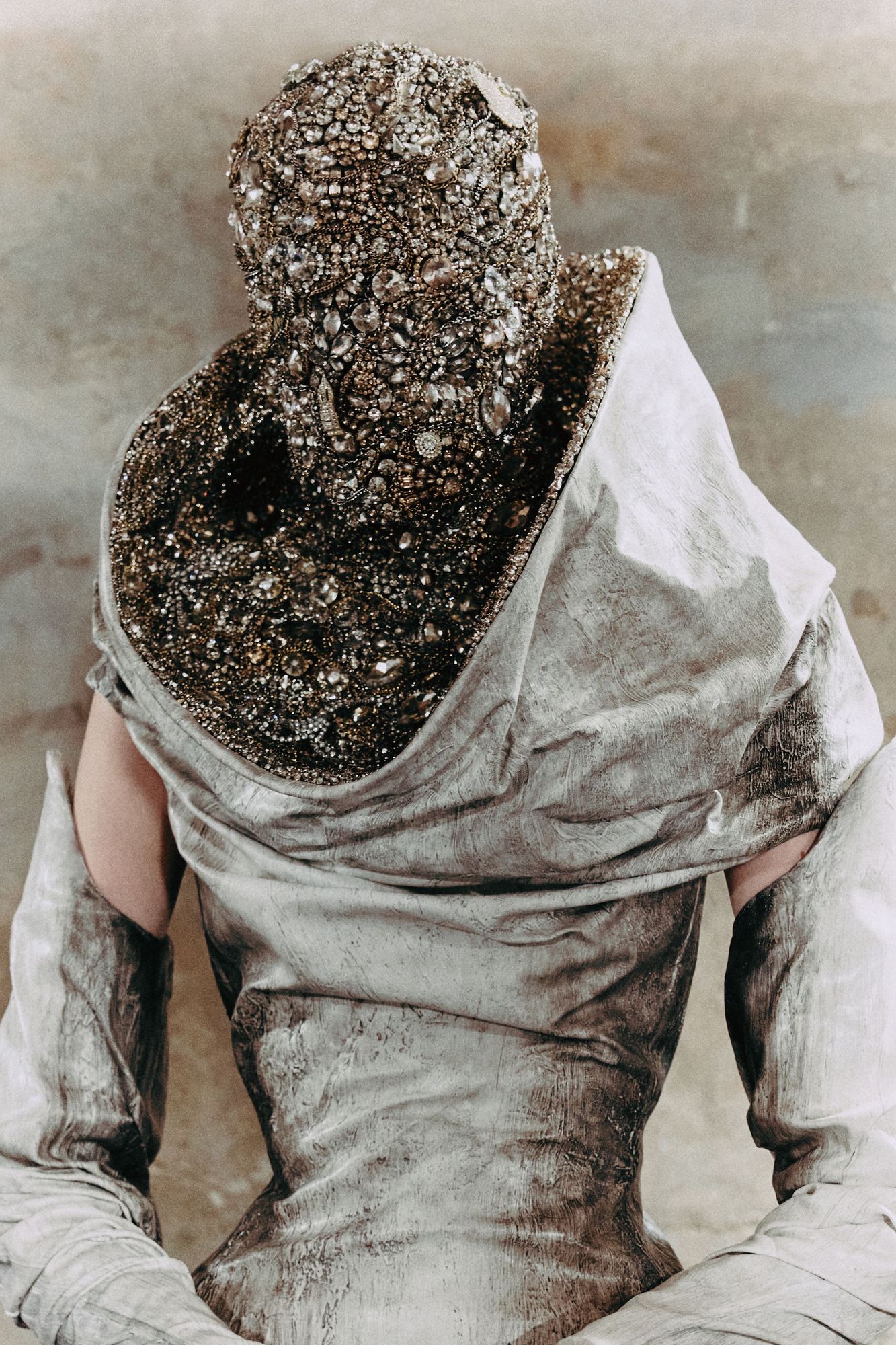
The Evolution of the Maison's Language: Martens' Margiela
Still, there’s a sense of restraint—a deliberate one. It plays into fashion’s growing impulse toward curation over excess. The Artisanal Fall 2025 collection showcases Martens' refined vision for Margiela—crafted through meticulous selection, editing, and restraint. The language of Margiela has evolved, and will continue to do so, under the direction of Martens. It can only be described as a sacred beginning for the Maison—instigating a new, exciting time in fashion and suggesting that under his direction, the brand is surely poised for further innovation.
